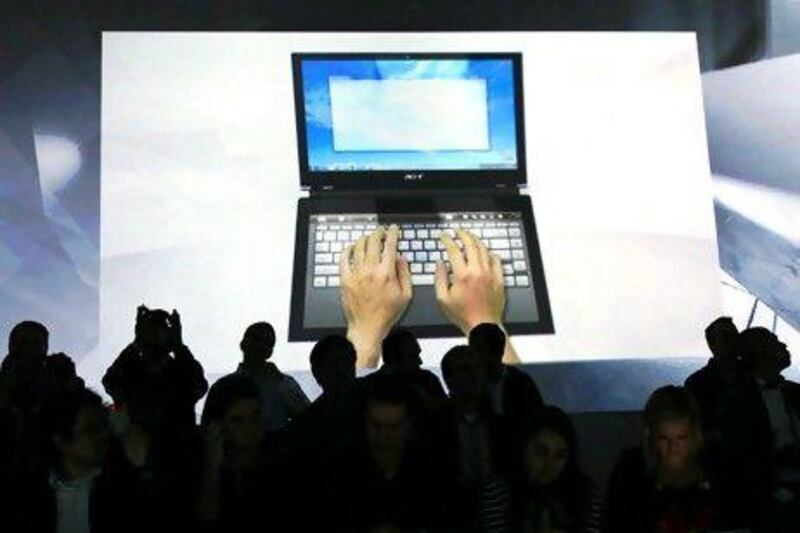Over the next few years, the idea of a "newspaper" will undergo a radical transformation, and most readers in the UAE and throughout the Middle East will prefer to get their daily news not from a printed paper but from a screen - if they do not do so already.
Digital formats will offer not just traditional stories but also video footage, an expanded selection of photos, access to primary source material and the ability to comment on stories. And all of this will come packaged in attractive and intuitive user interfaces, such as iPad or smartphone applications.
Media analysts in the Middle East have predicted this switch to digital news for years as broadband access has spread throughout the region, and thus far those predictions have been wrong.
Nearly 90 per cent of UAE consumers have fixed broadband access, and 60 per cent have mobile broadband, which is comparable to markets such as the UK, Japan and South Korea.
But while readers in those markets have migrated to digital news in significant numbers, printed newspapers in the UAE and much of the Middle East remain a strong business. In fact, the number of daily papers sold in the UAE has been rising in recent years.
Why were those earlier predictions incorrect? There are three main reasons: an underwhelming supply of compelling content on digital platforms; low penetration of smartphones and laptops in the region generally; and problems with the speed and capacity of fixed broadband service. However, there are clear signs that all three limits will fade in significance over the next few years.
In terms of content, there are simply not enough digital news sources here for readers to change their habits and give up their daily papers. In particular, newspapers still hold a relative monopoly on local news.
But this is likely to change. Global news companies such as CNN, the BBC, Al Jazeera and Al Arabiya already offer free international and regional news on their Arabic websites and through their mobile applications.
Although these companies do not yet cover local news, they soon will, either through syndication deals with local news brands or even through citizen reporting programmes. As a result, newspaper publishers will have little choice but to compete for local readers in the digital forum.
Social media will also play a role in catalysing the spread of digital news sources by driving readers to seek them. The GCC now has more than 5 million Facebook users, who increasingly use the site as an aggregator of content, with links to articles and other digital resources.
In fact, social media have become leading drivers of online traffic, rivalling search and other major sites. Worldwide, Facebook is the top driver of traffic for major news and entertainment portals, and is becoming more popular every day.
A second reason for the slow migration to digital content in the region generally so far has been low penetration of smart mobile devices, which are major drivers for the consumption of digital news.
Only about 15 per cent of consumers in the UAE have smartphones, compared with more than 50 per cent for the US and western Europe. There is a behavioural element at work as well - many consumers in the region simply prefer the simplicity and physical feel of a printed newspaper.
But these factors are also likely to change. The Middle East is among the fastest-growing markets for mobile devices, with sales of smartphones up 121 per cent last year compared with 2009.
The price of mobile technology has fallen sharply and will continue to decline, making these devices more accessible to more consumers. And a burgeoning young demographic will soon enter the workforce and begin earning salaries that will allow them to make these kinds of discretionary purchases.
On the behavioural front, technology advances are allowing digital content to more closely replicate the print experience, particularly publications that use Apple's iPad tablet.
The final reason why readers have not yet shifted to digital news is the slow download speed of fixed broadband service in some key markets. A recent study found that download speeds in the UAE, Saudi Arabia and Qatar were just one fifth of the rate in countries with the most robust networks, such as South Korea.
Yet, as with the first two factors, the quality of broadband access in the region is changing in ways that will make digital news more attractive. By the end of this year, every home in the UAE is expected to have access to fibre-optic lines, with fixed-broadband speeds of up to 100 megabytes a second.
Mobile broadband service is about to get a lot better, too: the wireless providers Etisalat and du are testing fourth-generation, or 4G, technology, which represents a big step over existing technology.
Printed newspapers will not disappear: there is something inherently pleasing about reading a newspaper, and some readers will probably always prefer to get their news in that format.
But those readers are a minority of the current newspaper readership. A survey by Booz & Company shows that 76 per cent of the respondents had reduced or stopped reading newspapers in the past two years or expected to do so in the next two years.
Gaby Chahine is a partner, Jayant Bhargava a principal and Amer Lahham a senior associate at Booz & Company





